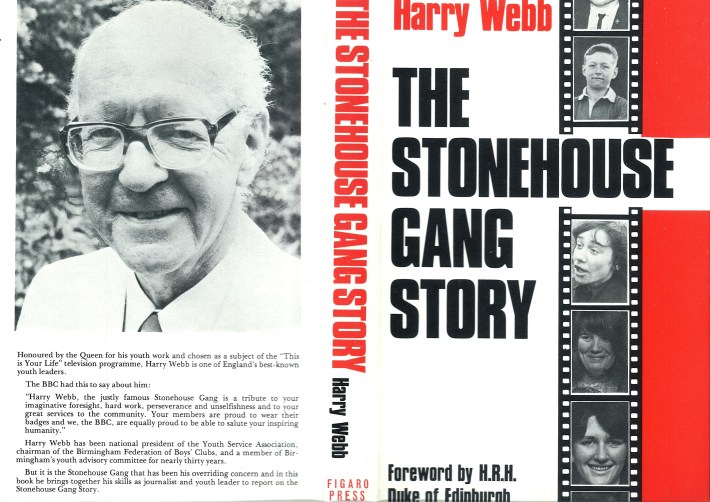
We received a call this summer asking whether we would be interested in working with a youth club on a collaborative project. It was from somebody purporting to be from The Stonehouse Gang, a name nobody at the school was familiar with at first. We do receive a lot of similar calls every year but many do not turn into anything concrete. However, this call was different.
They hooked us in with their claim that we worked with them several decades ago, a fact that no current member of staff had prior knowledge of. We were intrigued so arranged a meeting. Sure enough, after the first visit we soon began to learn how important that phone call may become.
The Stonehouse Gang is a youth group based in Selly Oak, South Birmingham. It was founded by Harry Webb, a newspaper reporter in Birmingham all the way back in 1938, after being motivated to provide a positive contribution to the community after watching the film “Boys Town’ at a local cinema. The trick it seemed, was to encourage local boys, normally up to no good, to attending a Sunday School on the Stonehouse estate – not as school – but as a gang (in secret). The youth club still survives to this day and is an active organisation in the local community. It is the youth club headquarters where the gang forged a link with the Birmingham School of Architecture many decades ago.
Forward to today, Trevor Franklin, the club secretary, sounds proud when recounting the tale of how the club house was constructed and even provided us with Harry Webb’s autobiography The Stonhouse Gang Story. Chapter 9 is most relevant – ‘By the Young for the Young’.
The club resided in convereted timber huts for almost 20 years since its founding until they were not fit for purpose. In 1957, with limited funds, Harry wrote to the president of the architect’s association to see if any local architects could assist them. A young architect’s name was put forward, James Roberts because he also taught at the Birmingham School of Architecture. For some years, the school had been pioneering a ‘lively new approach’ to teaching with ‘[final] year students to be involved in new building projects, from the stage of surveying through to planning and then seeing the scheme right through to its conclusion.’ (Webb, 1978 p.99).
James was inspired by the proposal and the school already had a reputation of successfully working on live projects with the city council. Along with the students, it was upon their request to move their clubhouse site to the current Burnel Road site for a simpler design solution. With a budget of just £7500, the collective design from the students was put through planning and built by Johnnie Johnson a local builder (who also studied at the School of Architecture). Webb quips that a significant amount of the build cost was absorbed as a donation from Johnnie. The actual amount has never been disclosed but it is seen as a generous philanthropic gesture on behalf of the builder.


From reading further into Harry’s commentary on the design process, the nature of the collaboration between the students and the youth club members is strikingly similar to how we asked our current students to work with them this year…
The trainee architects had done a fine job. They had given up time to go along the the Gang’s hutments to discover what the needs were. They played games with the youngsters and chatted to them about the use they made of the rooms. The Gang’s voluntary helpers told them of activities they would love to undertake if only they had the space. The students got the “feel” of the Gang work and very capably translated it into the bricks and mortar of Burnel Road.
Our collaboration with the club is of a different scale – to include the refurbishment of the old clubhouse and to remodel the interior with new facilities whilst providing a sustainable approach to the maintenance of the building. However, the legislative and financial process will be very different to the one the first students undertook and so this new project will be ongoing for a few more years yet. We hope it will be as successful and used as the original.
FURTHER NOTES
The project was completed with the foundation stone laid by John Hunt, conquerer of Everest. An original letter from Stonehouse’s archive illustrates the communication between the then Head of School and Harry Webb (above). James Roberts went on to set up his own practice working on notable projects such as the Rotunda and Smallbrook Ringroad.
Webb, H (1978) The Stonehouse Gang Story Figaro Press, Birmingham
See http://www.bigredbook.info/harry_webb.html for a picture of the gang and Harry on telly…